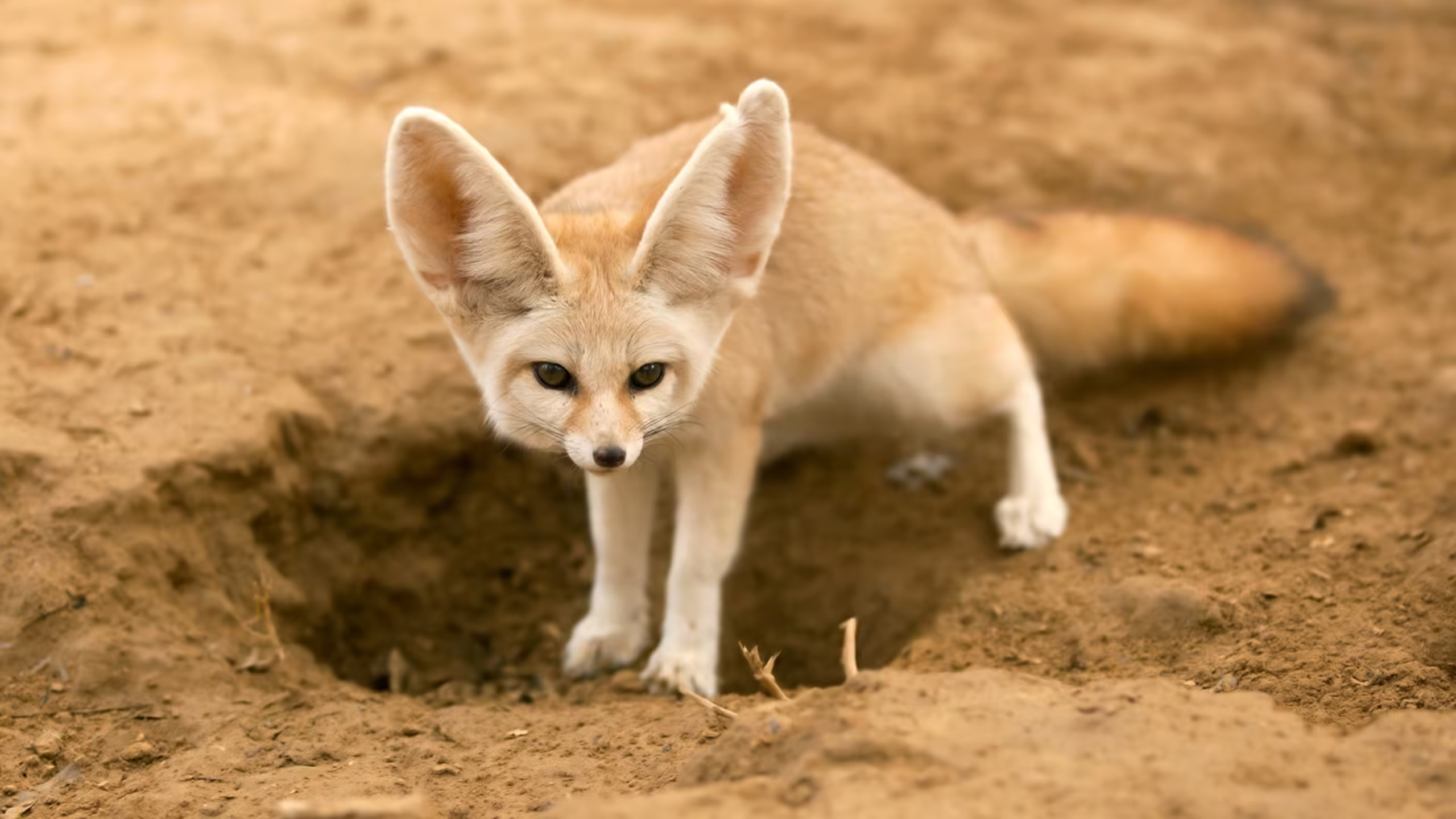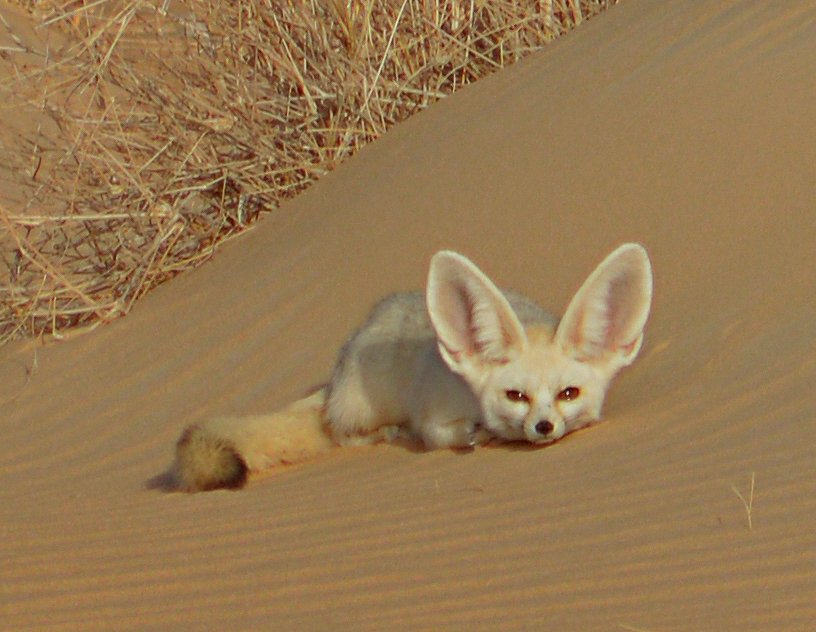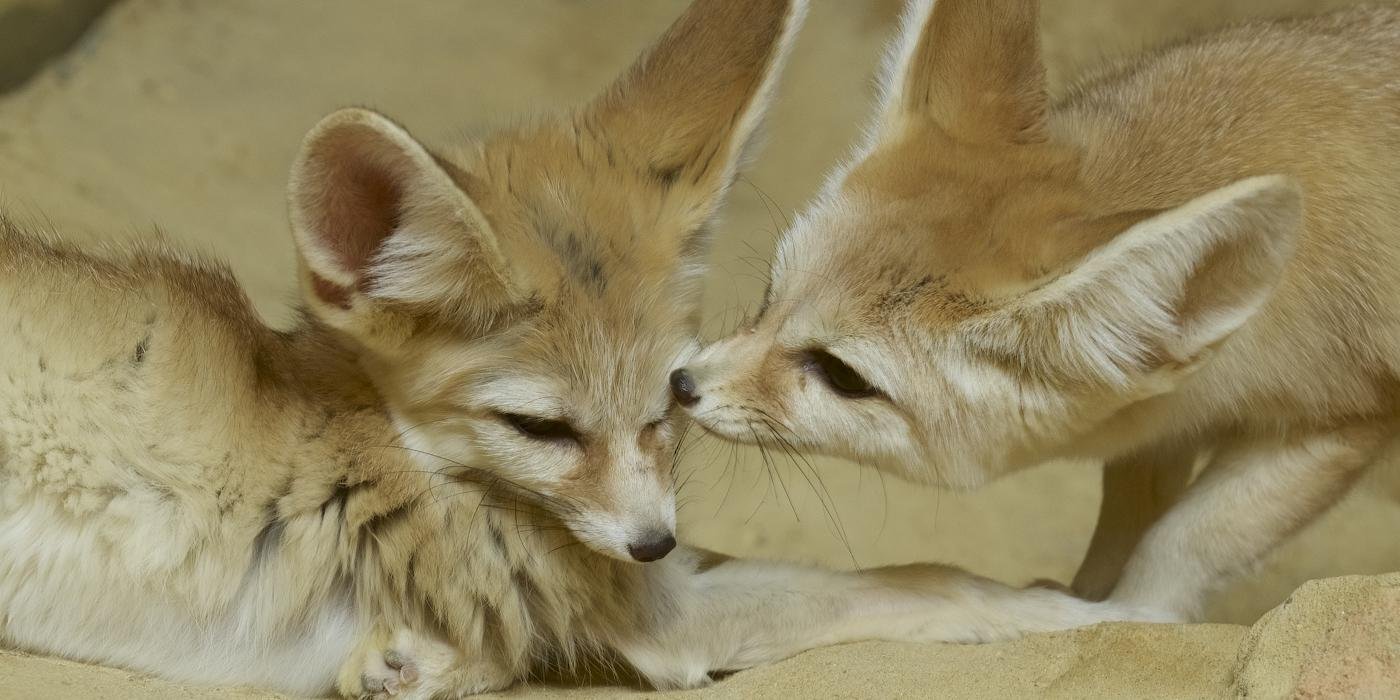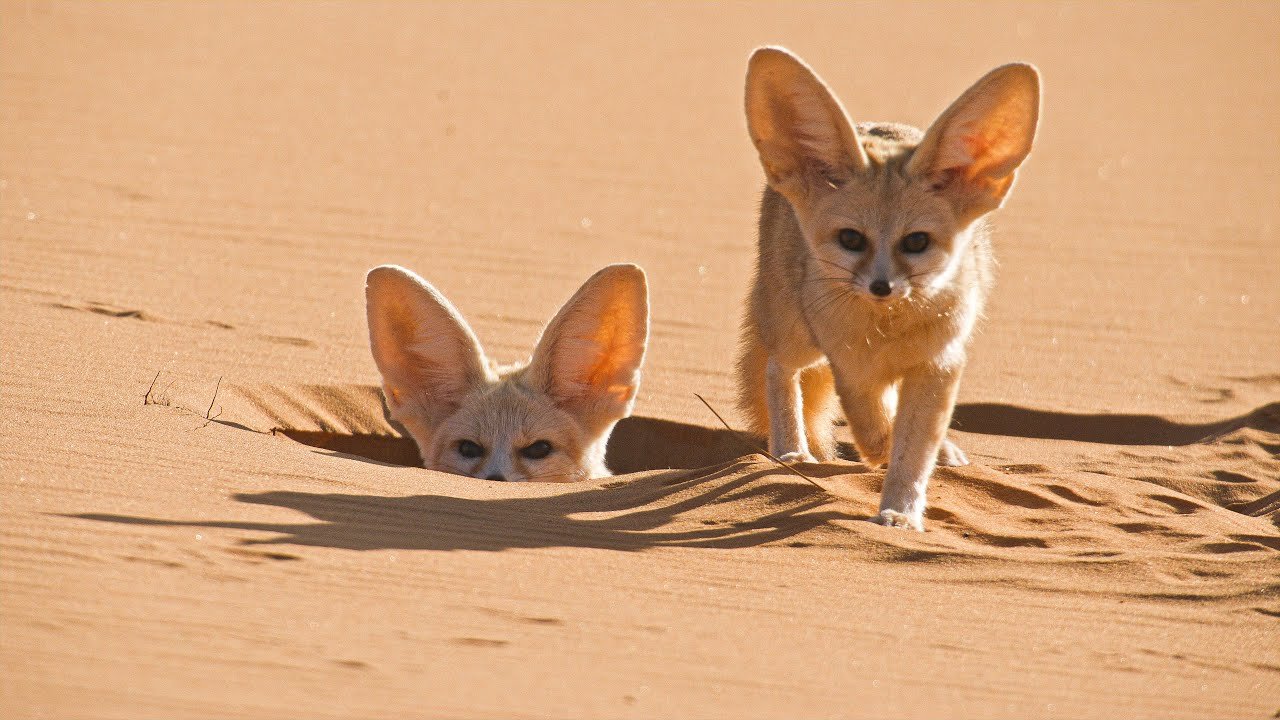Description
Geographic Distribution
The Fennec fox (Vulpes zerda) is native to the deserts of North Africa, with its highest population density found in the Sahara Desert across countries like Algeria, Egypt, Libya, Morocco, and Tunisia. It is also present in parts of the Sinai Peninsula and Saudi Arabia.
Its ability to live in extreme arid conditions makes it highly suited to desert life, where few other mammals can thrive.
Preferred Habitat
Fennec foxes prefer sandy deserts and arid environments with sparse vegetation. These foxes build complex underground burrows, which can stretch several meters and offer shelter from the intense heat of the day.
Their habitat choice is critical for temperature regulation, predator avoidance, and breeding. They tend to live in small family groups and are nocturnal, emerging at night to hunt.
Physical Characteristics
The Fennec fox is instantly recognizable thanks to its oversized ears, which can grow up to 15 cm long. These ears serve not just for acute hearing but also for dissipating body heat.
Typically, they measure 24 to 41 cm in body length, with an additional 18 to 30 cm tail. They weigh between 1 and 1.5 kg.
Their cream-colored fur reflects sunlight and provides camouflage in the sand, while the thick fur on their feet protects them from the hot ground.
Behavior and Diet
Fennec foxes are omnivorous and have a highly adaptable diet that includes insects, rodents, birds, eggs, fruits, and roots.
They are solitary hunters, relying on their keen hearing to locate prey under the sand.
Nocturnal by nature, they avoid the heat of the day and are most active during the cooler hours of the night.
Despite their small size, they are highly agile and capable of jumping great distances relative to their body size.
Reproduction
Breeding season for Fennec foxes occurs once a year, usually between January and March. The female (vixen) gives birth to a litter of 2 to 5 kits after a gestation period of around 50 days.
The kits remain in the den for the first few weeks, and both parents take part in raising them.
Young Fennec foxes are fully weaned by 60–70 days and reach sexual maturity at around 9 months.
Lifespan and Survival
In the wild, Fennec foxes typically live 8–10 years, while in captivity with proper care, they can live up to 14 years or more.
Their primary defense mechanisms include burrowing, camouflage, and high awareness of predators, such as owls and jackals.
Domesticated Fennec foxes, when bred and raised in captivity, can adapt well to human environments under the right conditions.
Threats and Conservation
While the Fennec fox (Vulpes zerda) is not currently classified as endangered, it does face several regional threats. These include habitat degradation due to increasing urbanization, off-road vehicle activity, and agricultural expansion across North African deserts.
In some areas, Fennec foxes are captured illegally for the exotic pet trade or killed out of fear or perceived nuisance, especially when they approach human settlements.
Despite being listed as Least Concern by the IUCN, the species remains vulnerable to the loss of its natural habitat and unregulated trade.
Conservation efforts focus on raising public awareness, regulating international trade, and protecting key desert ecosystems to ensure the Fennec fox continues to thrive in the wild.








